
Some pregnant women may experience pre-eclampsia, which often develops in the second half of the pregnancy (beginning at 20 weeks) or shortly after the baby is delivered. Preeclampsia is a multisystem progressive condition that usually manifests after 20 weeks of gestation or after giving birth. It is characterized by the new onset of hypertension and proteinuria or the new onset of hypertension plus severe end-organ dysfunction with or without proteinuria.
Causes
Preeclampsia’s precise etiology is probably a combination of variables. The organ that feeds the fetus during pregnancy, the placenta, is thought to be the starting point by experts. New blood vessels grow and change early in pregnancy in order to provide the placenta with nutrients and oxygen.
It appears that these blood arteries do not form or function normally in preeclamptic women. An inconsistent mother’s blood pressure regulation may result from problems with the placenta’s blood circulation.
Risk Factors
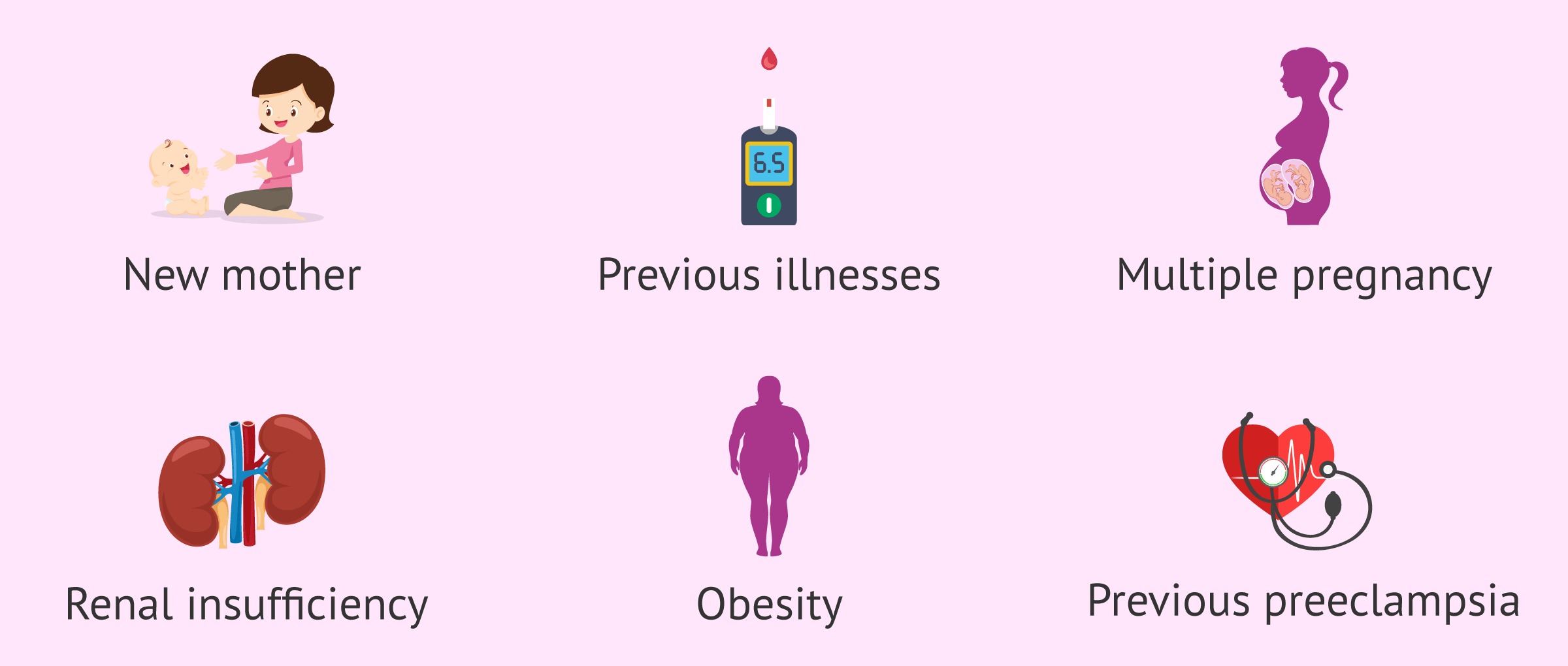
Age. Women older than 40 are at higher risk.
Obesity.
Family history of preeclampsia.
Autoimmune disorders.
Multiple gestation (being pregnant with more than one fetus).
African American ethnicity. Also, among women who have had preeclampsia before, non-white women are more likely than white women to develop preeclampsia again in a later pregnancy.
Chronic high blood pressure or kidney disease before pregnancy.
High blood pressure or preeclampsia in an earlier pregnancy.
Use of in vitro fertilization.
More than 10 years since previous pregnancy.
Being lower income (this is because of inequities that increase your risk of illness).
Symptoms
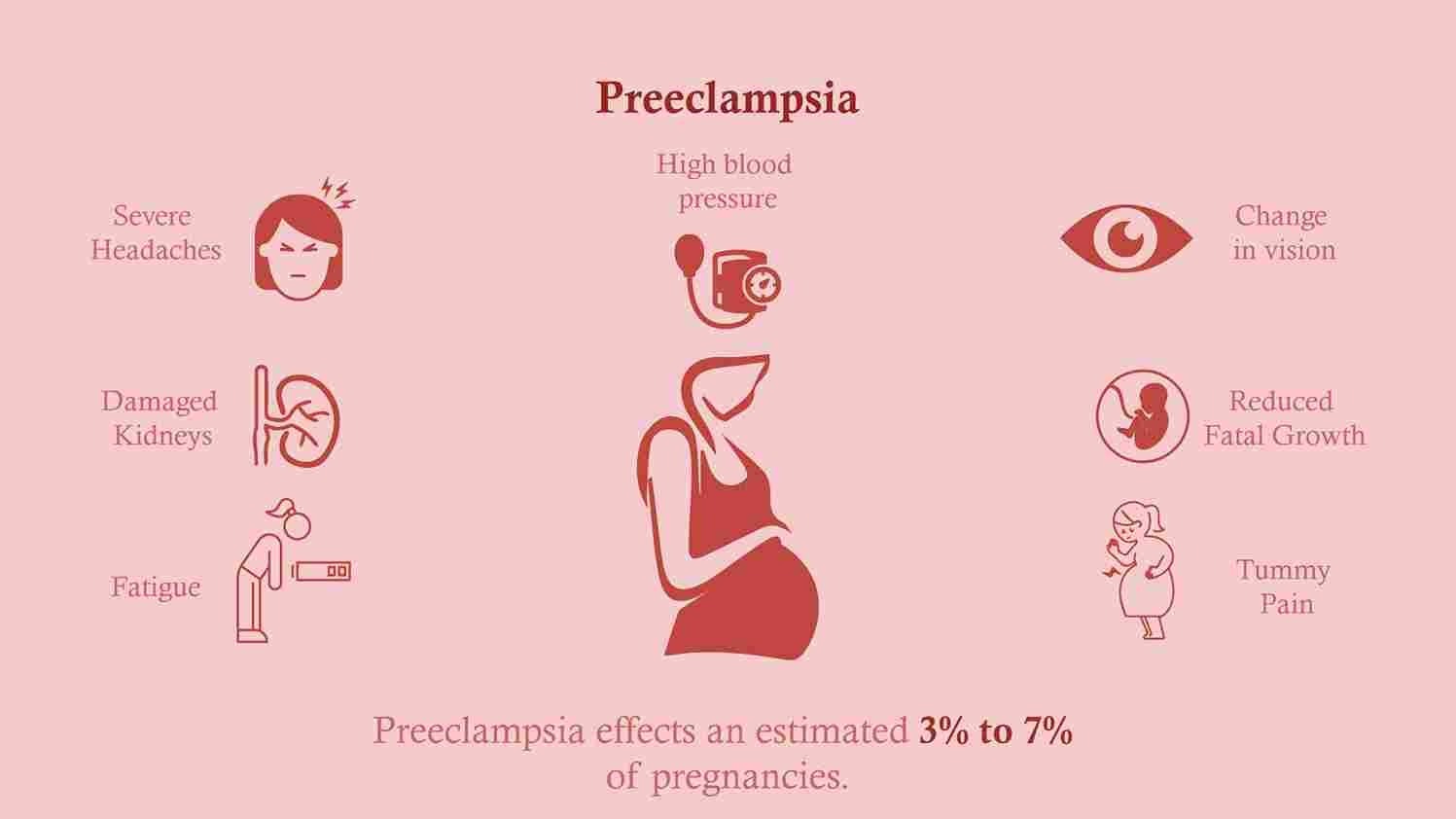
Excess protein in urine (proteinuria) or other signs of kidney problems.
High blood pressure (hypertension).
Sudden weight gain over 1 or 2 days because of a large increase in bodily fluid.
Severe headaches.
Swelling in your hands, ankles and face (edema).
Trouble breathing.
Increased liver enzymes that indicate liver problems.
Vomiting.
Not producing or producing very little pee.
Change in reflexes or mental state.
Shortness of breath, caused by fluid in the lungs.
Dizziness.
Vision changes like flashing lights, floaters, or blurry vision.
Complications
Problems affecting the mother:
Eclampsia: Preeclampsia can progress to eclampsia, the most severe type of high blood pressure associated with pregnancy. It is one of the main causes of maternal death worldwide and can trigger convulsions that cause brain damage. Eclampsia is a medical emergency that needs to be treated in a hospital, requires medication, and involves giving birth.
Stroke: High blood pressure can cause disruptions to the brain’s blood flow. This is referred to as a stroke or cerebral hemorrhage.
Brain cells will begin to die if the brain doesn’t get enough oxygen and nutrients from the blood, which could result in brain damage and even death.
Pulmonary edema: the area where fluid accumulates in and around the lungs. This keeps the lungs from taking up oxygen, which hinders them from functioning normally.
Liver failure: interference with the liver’s normal activities. The liver performs a variety of tasks, including as breaking down proteins and lipids, creating bile, and eliminating poisons. Any harm that prevents these processes from working could be lethal.
Renal failure: when the kidneys are unable to remove waste from the circulation. The body accumulates fluids and poisons as a result.
HELLP syndrome: HELLP stands for hemolysis (breakdown of red blood cells), elevated liver enzymes and low platelets. It is a very serious complication of pregnancy that occurs in about 15% of pregnant people with preeclampsia or eclampsia, especially those who are age 35 and older.
Bleeding after giving birth.
Blood clotting disorders.
Problems affecting the baby:
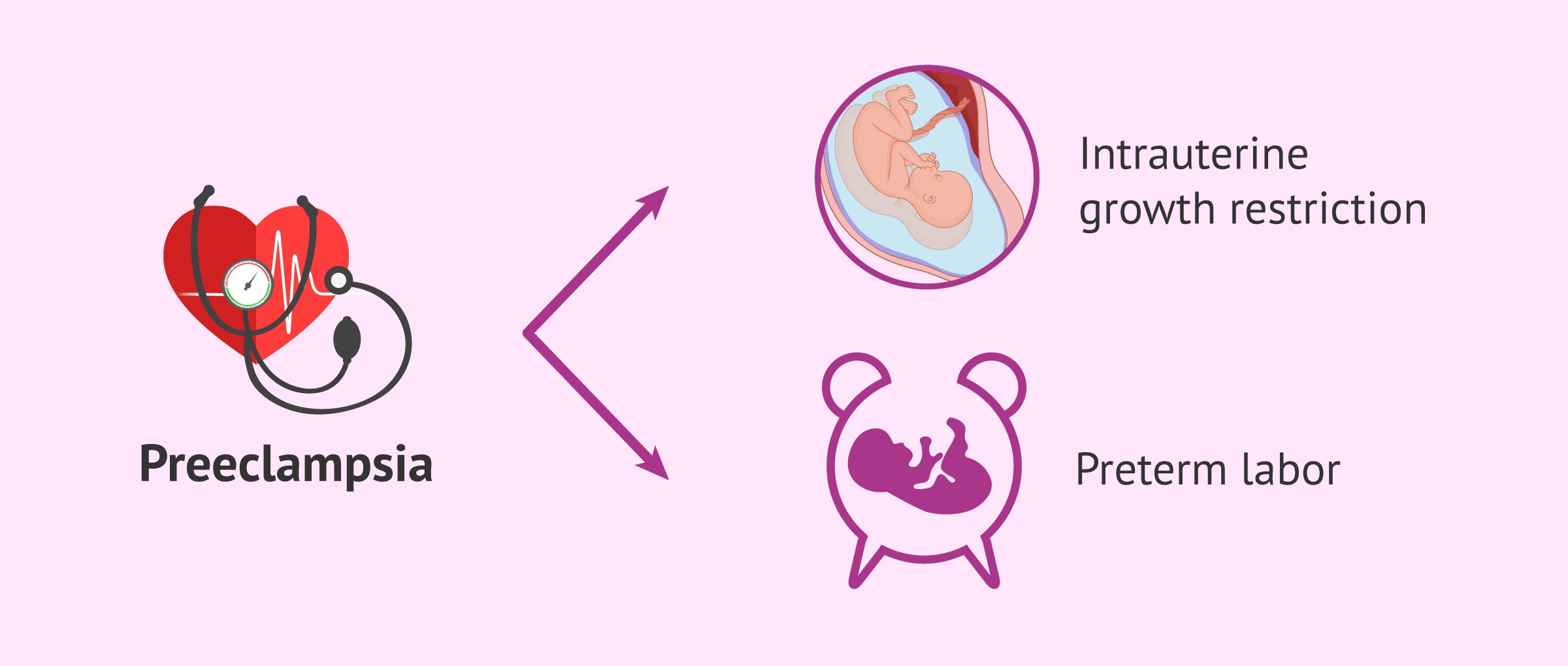
Born prematurely before 37 weeks. Premature babies are more likely to experience cerebral palsy, developmental delays, respiratory and eating issues, vision or hearing issues, and developmental delays. Preterm delivery treatments can lower some of the dangers.
Restriction on fetal growth. The arteries supplying blood to your placenta are impacted by preeclampsia. Your baby may not receive enough blood, oxygen, or nutrients if your placenta isn’t getting enough blood.
Stillbirth or death soon after being born.
Less amniotic fluid than normal (amniotic fluid surrounds and protects the developing fetus)
Diagnosis
Urine with an excessive amount of protein.
Your blood platelet count is low.
Elevated blood levels of substances linked to the kidneys.
Elevated blood levels of substances linked to the liver.
Your lungs’ fluid.
A recent headache that persists despite treatment.
In addition to some tests to confirm the diagnosis like: Blood tests, Urine tests, Ultrasound and Biophysical profiles.
Treatment
Pre-eclampsia can only be cured by delivering the baby. If you have pre-eclampsia, you’ll be closely monitored until it’s possible to deliver the baby.
By 37 weeks or later, if your baby has developed properly, your doctor might decide to perform a cesarean surgery or induce labor. By doing this, preeclampsia will not worsen.
You and your doctor might be able to manage moderate preeclampsia if your baby isn’t close to term until they’ve grown enough to be delivered safely. It is best for your kid if the birth occurs closer to your due date.
Prevention
Your physician may recommend taking 81 milligrams of low-dose aspirin daily if you are at an elevated risk of developing preeclampsia. However, consult them before taking any vitamins, supplements, or drugs.
Modifications to your lifestyle that can help you stay well and avoid preeclampsia. You may have to:
Exercise regularly.
Get your blood pressure or blood sugar under control.
Stop smoking.
Lose some weight if you’re overweight.

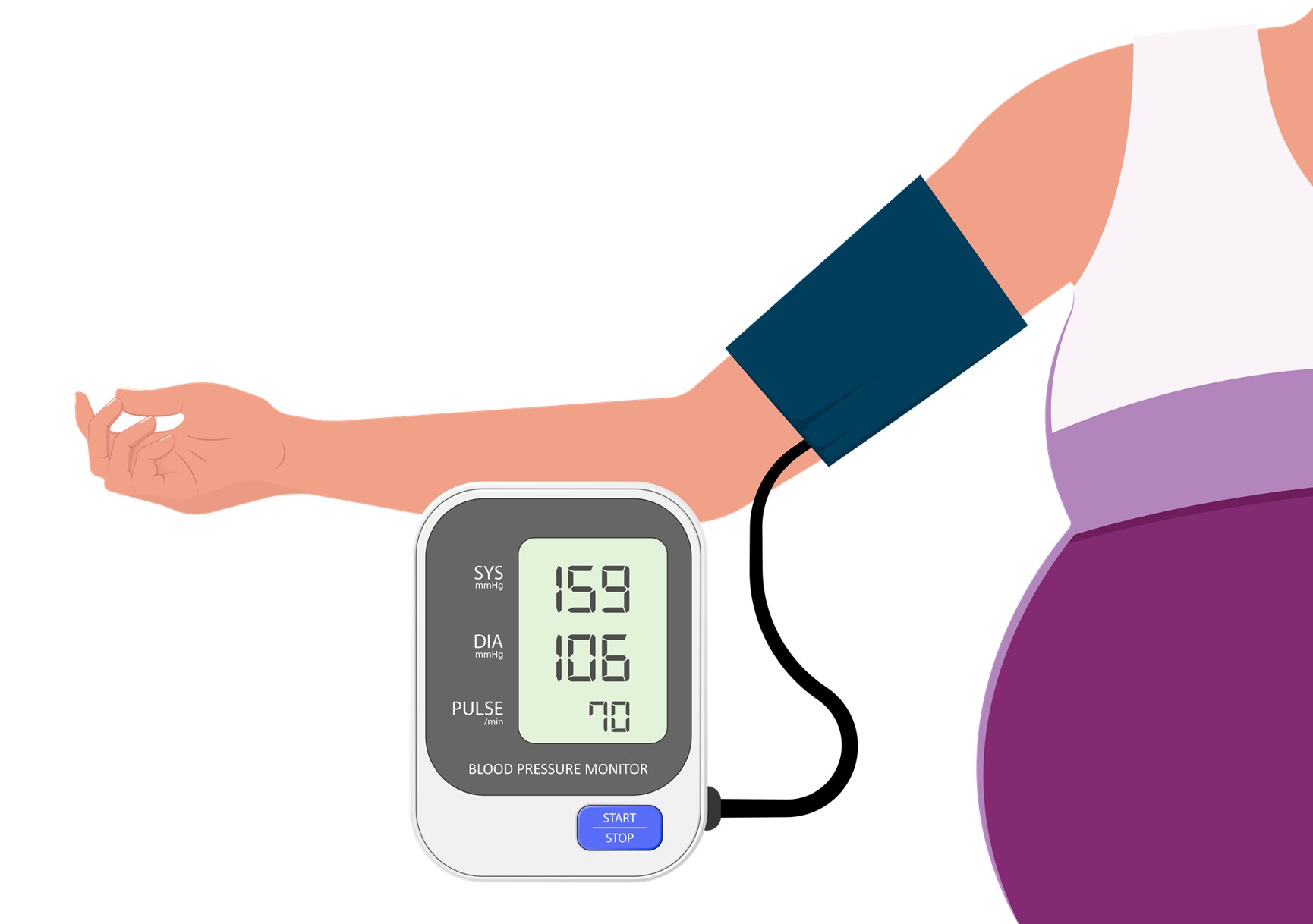






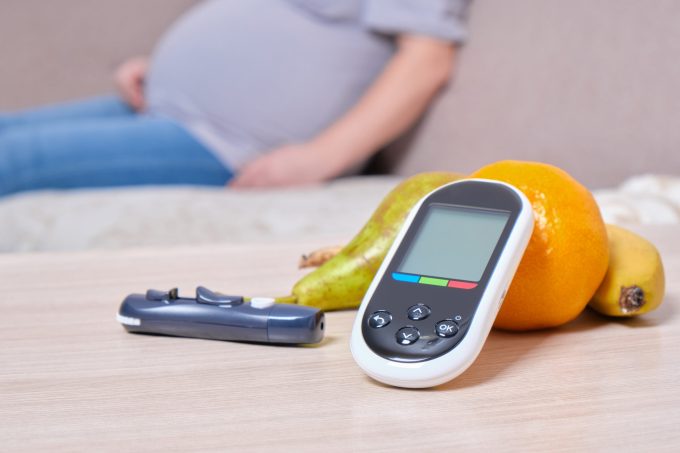





Leave a comment